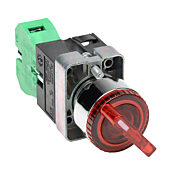illin8
Well-Known Member
In planning out my control panel I initially decided I'd just do a DPST 30-amp switch to control both legs of power going to the SSR/heating element. In looking at the switches at automationdirect.com is there a better alternative? I really only need an ON/OFF switch to control power to the element.
Anyone care to share their experience and/or give me some advice? Are the automationdirect switches rated for 240v? What would I need? I'm inclined to just buy the damn $11 30-amp DPST switch from Home Depot and be done with it but I'm putting in an order with automation direct anyway...figured I'd ask before I put the order in.
Anyone care to share their experience and/or give me some advice? Are the automationdirect switches rated for 240v? What would I need? I'm inclined to just buy the damn $11 30-amp DPST switch from Home Depot and be done with it but I'm putting in an order with automation direct anyway...figured I'd ask before I put the order in.



